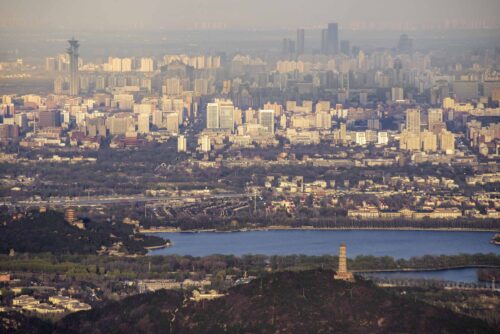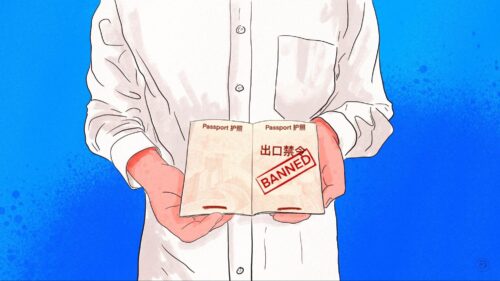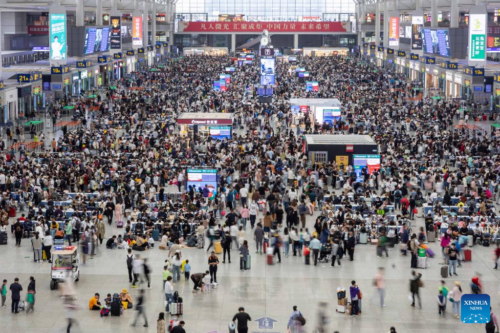Will Xi’an become a megalopolis at the heart of the New Silk Road?
The ancient capital prepares for the spotlight once again.

In December 2016, Wang Yongkang 王永康, Xi’an’s newly appointed Party chief, took a stroll atop the western Chinese city’s ancient walls. Finding the ground covered in cigarette butts, he stooped to pick them up — in front of his entourage and local media. He collected 27 butts. A few days later, a sweeping campaign was announced to clean up the city’s litter. Street banners promised a schedule of rewards: Three cigarette butts could be swapped in for a packet of napkins, 6 earned you a face mask, 15 for cosmetics.
Residents, excited by the city’s recent resurgence, took to the campaign with enthusiasm. Local officials organized cleanup crews; brooms and gloves were passed around; everyone from business owners to school teachers stooped to participate, filling trash bags by the thousands.
The revival of an ancient capital
Following decades of faltering growth, Xi’an, the capital of Shaanxi Province in northwest China, has enjoyed a remarkable rise since the turn of the century. In February 2001, the provincial governor declared a goal to reverse the region’s misfortunes and appointed Xi’an the province’s “economic dragon head.” Authorities made large-scale development projects a priority and disbursed giant subsidies to attract foreign investment. Between 2000 and 2012, inflation-adjusted GDP in the greater Xi’an area — encompassing Xianyang, Xi’an’s smaller neighbor to the west — more than tripled.

Part of the strategy involved promoting Xi’an’s rich history, with heritage sites known to draw visitors from all over the world. It is the oldest of China’s four great ancient capitals, and offers tourists and historians some of the most interesting attractions in the country, most famously, the Terracotta Warriors that guard Emperor Qin Shi Huang’s tomb, Buddhist texts in the Big Wild Goose Pagoda, and the Ming dynasty Bell Tower. It is also the only major Chinese city whose ancient walls are still intact.
Xi’an’s cultural industry accounts for roughly 7.5 percent of its GDP, more than double the average of other major Chinese cities. New records for annual tourists, now exceeding 3 million, have been set and broken each year.
In 2009, Zhao Leji 赵乐际, then Shaanxi’s Party secretary and a rising star within establishment ranks, attained the central government’s endorsement to build up greater Xi’an into an “international metropolis.” The designation was important. It elevated the municipality’s growth targets and clinched massive state commitments to achieve them. Additional bus routes were mapped and excavation began on a sprawling subway network. The Xi’an-Xianyang International Airport added a new terminal and second runway in 2012 and the Xi’an North Railway Station, upon completion in 2018, will serve 82 million passengers annually, making it one of Asia’s largest rail terminals.
These days, cars taking the airport expressway speed past government notices, commercial billboards, and factory chimneys in the shape of engorged bowling pins. Close observers will notice some billboards, including a few inside the new airport terminal, touting a long and rather peculiar name: the Western China Science & Technology Innovation Harbour Wisdom Uni-Town. The project, named iHarbour for short, broke ground last year inside the Xi’an-Xianyang (Xixian) New District, a little-known development that epitomizes the city’s quest to be global and metropolitan.

A cut of land joining Xi’an and Xianyang into “an organic whole,” the Xixian New District, when completed, will feature industrial development zones and special hubs for aviation, trade, technology, and culture. Perhaps its greatest significance, though, comes from an effort to restore Xi’an to its former glory as a globally significant center of trade.
More than 2,000 years ago, the city was the starting point of the Silk Road. Now plans for One Belt, One Road — President Xi Jinping’s signature initiative to redraw trade lines through Central Asia and Europe — are building the Xixian New District into a major hub for the expected, and vast, flows of commerce. Locals aren’t shy about their sense of destiny. “This is a once-in-a-million-years opportunity for Xi’an and Shaanxi to reemerge as the focal point for a national initiative,” Qiang Xiao’an 强晓安, director of Xi’an’s development and reform commission, told state media.
Visiting iHarbour
On a smog-filled afternoon last month — the Air Quality Index wagged between “Very Unhealthy” and “Hazardous” — I visited a corner of the Xixian New District, where construction on iHarbour recently began. iHarbour is a joint venture between the emerging district and Xi’an Jiaotong University, the jewel of Shaanxi Province’s education system.
Jiaotong University was founded in Shanghai as one of the nation’s premier research institutions. As fighting during the Korean War intensified in the 1950s, the university sent a team of officials to Xi’an. There were concerns at the time that Shanghai’s coastal location made the university vulnerable to invasion, so the team’s mission was to find a new home for certain departments deemed crucial to national development. Despite its glorious past, Xi’an had become a very poor city. When the delegates arrived in Xi’an, villagers came out and presented them with eggs. The eggs were their most valuable offering; families in the area could afford them only once a year during the new year. In 1956, Jiaotong University established a new campus in Xi’an.

About an hour’s drive from the main campus, iHarbour was all of three temporary buildings when I stopped by. A row of seven trucks sat beside two idle tractors in a nearby lot. On the long, narrow road that led to the site, a funeral procession was taking place a small distance away. About two dozen villagers had gathered around a coffin, surrounded by traditional paper displays in bright colors. Empty fields stretched in every direction and I wondered where the group had assembled from. When the wind picked up, dust mixed with smog.
An assistant greeted me inside a small room lined with poster boards and began a rehearsed lecture. When iHarbour completes development in 2018, the center will sit on nearly 300 hectares on the south side of the Weihe River. The target population of 50,000 residents will include 10,000 “high-talent” individuals, particularly in the field of engineering. Construction on buildings under seven floors is expected to wrap up this year. I poked a finger at the crisp blue backdrop in the promotional photos. “Will the skies be that clear?” The reply came without pause. “Yes.”
Since its founding, Xi’an Jiaotong University has maintained top-ranked departments in a number of fields, including one of the best engineering programs in the country. Yet the province’s economic handlers had long failed to convert the school’s academic and intellectual assets into successful industry. Through the 1980s and 1990s, as coastal Chinese cities boomed, few companies in Shaanxi took off and unemployment in the region rose. “It was not very satisfactory,” said Shen Bo 申博, iHarbour’s vice president. “To not take advantage of the school’s capabilities was like holding a golden rice bowl and begging for food.”
Cheery and animated, Shen sat at the head of a long table in a recently furnished conference room. He wore a navy blue turtleneck and held his hands in front of him, rapping his fingertips on and off the table when making a point, as if he were tapping piano keys. iHarbour’s ambitions, he said, were a reflection of the country’s. President Xi, addressing the World Economic Forum in Davos a few weeks earlier, had cast China as the hero and defender of global trade, and touted One Belt, One Road as delivering “benefits well beyond its borders.”

Shen believes China’s time has come. “The big vision of One Belt, One Road is not only for China to jump-start development in the western region. It is for China to charge even further westward.” He held up his hand and punched it forward, as if through a barrier. I asked him what charging ahead meant and he pointed at a small glass teacup on the table.
“Even after 40 years of development, some countries look at China and don’t admit that it is a market economy,” he said. “Look at this cup. If you need a glass cup, you can easily find 200 companies producing them. It’s very cutthroat. Besides a few big state-controlled projects, all other levels of enterprise are subject to competitive forces.” He continued, “After 40 years of opening up, you can see the results. We’ve created models that are effective. And now we want to take these models to western China and beyond.”
He saved a question for me: What is the cost of renting a billboard for one day in New York City’s Times Square? I didn’t have the answer. Shen shrugged; he was more eager to explain his motives. The promotion itself could not be too expensive, he reasoned, and while the reach of the billboard may be limited, China’s media outlets loved reporting on Chinese displays abroad, ultimately spreading his message to a far larger domestic audience. iHarbour, he determined, would soon be going prime time.
It was almost evening on the drive back, though the grayness in the air remained unchanged. We passed the mourners from earlier, who, by now, had formed into a line. About 500 homes in the area were cleared before iHarbour could begin construction; negotiating with the locals had delayed the kickoff for months. Some of the men stooped and lifted the coffin onto their shoulders, then began to carry it toward a few parked cars on either side of the main road. We kept driving and soon they were behind us, making their final tributes, and soon, to make room for tomorrow’s great metropolis, they won’t be around at all.





